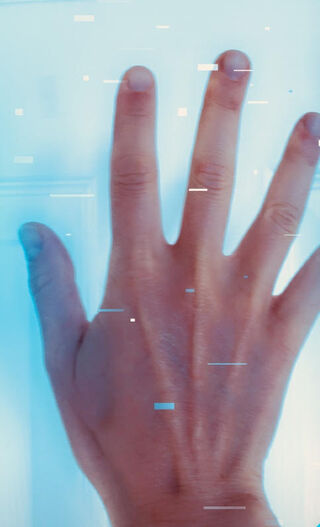Touch has become the latest front in the post-lockdown politics. Media propagate two extreme viewpoints: some applaud the benefits of a touchless society for managing the spread of viruses, while others lament an “unbearable skin hunger.” Touch is a privilege, so it is understandable that the balancing act can push us to the extremes. Yet, great innovation can happen if we attempt to understand that touch is a spectrum of privileges.
The market economy throws around terms such as the “zero-touch economy” to introduce entirely touch-free shopping experiences. With biometric techniques such as face recognition, there is no need to shake hands with the merchant. With personal data, personal contact between the retailer and customer can be still assured, so a “touchless world” sounds like a plausible utopia.
And yet, look at how awkward our corona greetings are. Or take Kissenger, which was invented to deliver kisses at distance by transmitting sensations from real lips to synthetic lips. Everyone knows that the sensation of a kiss radiates through the whole body, so how can such an attempt at kiss replication be satisfying? Our social and technological capabilities of communicating through touch are surprisingly underdeveloped.
We need to face up to the fact that the desire for touch varies by circumstances. The first step towards this recognition is to remember that the right to enjoyable touch can be revoked anytime by an illness. The emotional pain of an unrequited desire for touch is the reality for many who are chronically ill. And for those with allodynia, light touch can feel like stabbing on repeat. For these individuals, avoiding taps on the shoulder or kisses on the cheek is a way of managing their condition.
“We all need a daily dose of touch,” say the experts, and there is no doubt that touch is an essential glue for relationships. And yet, through the years, there has been a systematic hollowing of touch desirability in many professional contexts. Doctors, teachers or social workers who merely want to offer comfort and support are warned against touching children, patients, clients. Same-sex couples face hate speech in many countries when they hold hands in public.
In most cases, the lack of physical touch does not happen by choice but the way we communicate touch virtually is entirely in our hands. The emoji etiquette has taken a backseat in many public social media exchanges, with the kiss emoji tossed around like a “hi” or “bye.” Underdeveloped etiquette for online “touch” intrigues many creative writers, with a recent surge of writings on exclusively virtual relationships.
Positive innovation can be enabled if we don’t treat touch as a taboo subject. Virtual reality and 3D could help manage the intimacy deficit in couples in long-distance relationships without the need for degrading bodies to phantom figurines. Multi-sensory technologies could support the agonizing countdown for displaced families who can see and hear, but cannot feel each other at distance.
As the researchers in the IN-TOUCH project say, digital touch goes beyond touchscreens to wearables, robotics, and virtual reality. In the age of digital personalization, data-based technologies could be delivering precisely adjusted stimulations to any parts of the body. Secure and surgically precise sensual stimulations could expand the touch repertoire for those who are unable to touch.
We are learning in this pandemic that we need more localized and personalized solutions to manage great threats. Let us apply this lesson to the societal debate on touch. Let us abandon the labels of a “touchless” or “touch-hungry” society. Touch is a spectrum, and every individual has different desires when it comes to physical touch. Technologies can facilitate this diversity, but we need to advance them in parallel with social awareness-raising.
Flewitt, R., Kucirkova, N., & Messer, D. (2014). Touching the virtual, touching the real: iPads and enabling literacy for students experiencing disability. Australian Journal of Language & Literacy, 37(2), 107-116.
Source: A Time Without Touch Is an Opportunity to Rethink Its Place | Psychology Today Canada













